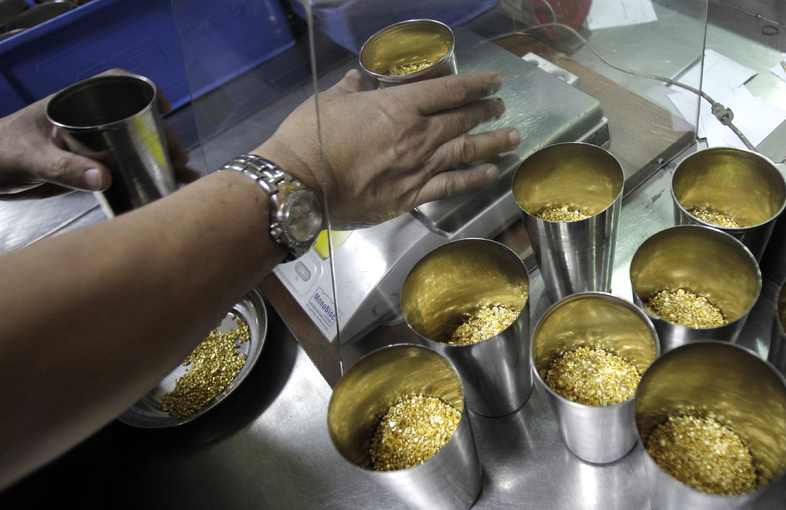Those who look to the heavens and wish for gold may have the right idea, just the wrong timing.
A new scientific look at how elements heavier than iron are formed in the universe suggests that much of the gold on Earth may have floated in space for billions of years after being spat out in the collision of two neutron stars. It arrived on Earth millions of years ago in meteor showers, researchers said.
The origin of heavy metals like gold has long been a scientific mystery, said Don Lamb, an astronomer at the University of Chicago. Now, astronomers at Harvard University have analyzed a gamma ray burst thought to be from a rare neutron star collision and found it helped seed the universe with heavy metals, including enough gold to create a pile that would have about 10 times more mass than the Earth’s moon.
“We now have this beautiful set of observations that have allowed us to peek at what’s going on, despite nature’s apparent shyness,” Lamb, who wasn’t involved in the research, said in a telephone interview.
The finding, submitted for publication in Astrophysical Journal Letters, came from observing light that took 3.9 billion years to reach telescopes on the earth’s surface, said Edo Berger, an associate professor of astronomy at Harvard in Cambridge, Mass., who led the research.
The collision studied involved a flash of light that lasted for less than two-tenths of a second. The Harvard team gathered its evidence by analyzing an afterglow that occurred when the heavy metals emitted underwent radioactive decay. Among the elements ejected were gold and platinum.
Berger’s team knew about the explosion after a gamma-ray burst from the collision was detected on June 3 by NASA’s Swift satellite. Though the initial rays from the blast disappeared almost immediately, the Harvard team turned the Hubble Space Telescope and European Southern Observatory’s Very Large Telescope in Chile to that area of the sky. They saw the afterglow of infrared light suggesting the presence of radioactive elements.
“Before this particular paper, we had no idea whether binary mergers could produce anything,” Dong Lai, an astrophysicist at Cornell University in Ithaca, N.Y., who wasn’t involved in the research, said in a telephone interview. “This is the first time we have observational evidence.”
For Berger, the finding is consistent with a career-long fascination with things that go bang in the night. Gamma-ray bursts interest him because they’re the most extreme explosions human beings know about, he said.
“That’s one of the fun things about working in explosive events, because it turns out the universe has many ways of producing explosions, more than our imagination can come up with,” Berger said in a telephone interview.
Four years ago, Berger helped identify the farthest-known gamma burst in the universe, and he has published research on how a black hole swallowed a star.
“The general perception that people have of the universe is that it’s an enormous place where things happen very slowly,” he said. “But when we look in great detail we realize the universe is extremely dynamic, and on human time scales. It changes from one second to the next.”
Send questions/comments to the editors.



Success. Please wait for the page to reload. If the page does not reload within 5 seconds, please refresh the page.
Enter your email and password to access comments.
Hi, to comment on stories you must . This profile is in addition to your subscription and website login.
Already have a commenting profile? .
Invalid username/password.
Please check your email to confirm and complete your registration.
Only subscribers are eligible to post comments. Please subscribe or login first for digital access. Here’s why.
Use the form below to reset your password. When you've submitted your account email, we will send an email with a reset code.